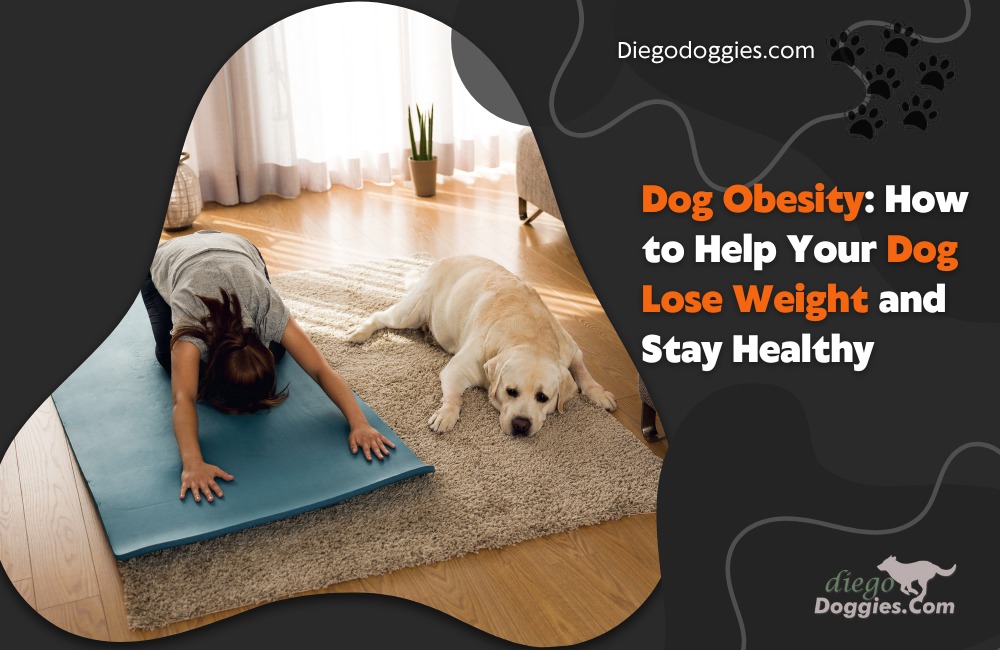Do you have a dog that is overweight? You are not alone. Obesity is a growing problem for dogs in the United States and around the world. Dog obesity is defined as an excessive amount of body fat.
It’s a serious problem because it can lead to numerous health issues, such as diabetes, joint problems, and respiratory difficulties. There are many factors that can contribute to dog obesity, including genetics, inactivity, and overfeeding.
Tips for Preventing Obesity in Dogs
Here are a few tips for preventing obesity in dogs:
Feed them a healthy diet: A nutritious diet is the foundation of a healthy weight.
Get them moving: Exercise is essential for all dogs, no matter their size.
Avoid too many treats: It’s important to limit treats, especially if your dog is prone to weight gain.
Talk to your vet: If you’re concerned about your dog’s weight, talk to your veterinarian. They can help you create a weight loss plan that is safe and effective for your dog.
In this blog post, we will discuss what causes dog obesity, how to help your dog lose weight, and ways to keep your dog healthy and fit.
Dog’s Calorie Reduction
The most important thing you can do to help your dog lose weight is to reduce their calorie intake. This will require some changes to their diet, but it’s important to make sure they’re still getting all the nutrients they need.
You may need to consult with a veterinarian or animal nutritionist to figure out how many calories your dog needs per day and what type of food is best for them.
Exercise your Dog Regularly
Exercise is an important part of any weight loss plan, and it’s no different for dogs. Regular exercise will help to increase your dog’s metabolism and burn calories. Make sure to consult with your veterinarian before starting any new exercise routine, as some dogs may need to build up their activity level slowly.
These are just a few tips to help your dog lose weight and stay healthy. If you’re not sure how much exercise your dog needs, talk to your veterinarian. They can help you create a weight loss and exercise plan that’s right for your dog.
And they can provide guidance on how to safely increase your dog’s activity level without injuring them.
Weigh Your Dog Regularly
A healthy weight for your dog is determined by their breed, age, and activity level. You should weigh your dog every month to make sure they are not gaining too much weight.
If you think your dog is overweight, talk to your veterinarian: Your veterinarian can help you create a weight loss plan for your dog that includes the right amount of food and exercise.
Feed Your Dog A High-quality Diet
When it comes to your dog’s diet, quality is more important than quantity. Feed your dog high-quality food that is appropriate for their age, breed, and activity level. Avoid giving your dog table scraps or human food, as these can add extra calories to their diet.
Monitor Dog’s Treat Intake
One way to help your dog lose weight is to monitor their treatment intake. While treats are a great way to show your dog love, too many can lead to weight gain. Try giving your dog fewer treats or opting for lower calorie options.
You can also break up their treats into smaller pieces, so they still feel like they’re getting a lot, but they’re consuming fewer calories.
Don’t Free-feed Your Pet
This means always having food available. Free feeding can lead to overeating and weight gain. Instead, feed your dog two or three times a day, and measure the food so you’re not overfeeding.
You can use an online feeding calculator (like this one from the Association for Pet Obesity Prevention) to help you determine how much to feed your dog based on his weight, activity level, and other factors.
Don’t Forget to Factor in Treats
If you give your dog treats throughout the day, make sure you’re factoring those into his daily calorie intake. Too many treats can lead to weight gain.
Choose Healthy Treats
Not all treats are created equal. When you’re looking for a treat to give your dog, choose something that’s low in calories and high in protein, like freeze-dried liver or chicken. Avoid treats that are high in fat, like cheese or bacon.
How to Help Your Dog Lose Weight
If you think your dog may be obese, it’s important to consult with your veterinarian. They can help you create a weight-loss plan that’s safe for your dog. Generally, this will involve reducing the amount of food they eat and increasing their activity level.
Reducing the amount of food your dog eats may seem difficult, but there are a few things you can do to make it easier. First, measure their food carefully so you’re not overfeeding them. Second, avoid giving them table scraps or other high-calorie treats. And third, don’t leave food out all day for them to graze on.
Increasing your dog’s activity level is also important. If they’re not used to exercising, start slowly and increase the amount and intensity of their activity gradually. Taking them for a walk or run is a great way to get them moving, and you can also try playing fetch or other games with them.
Making these changes can be difficult, but they’re necessary to help your dog lose weight and stay healthy. With time and patience, you can help your dog reach a healthy weight and enjoy a long, happy life.

FAQ: How to Help Your Dog Lose Weight
Conclusion
There are many things you can do to help your dog lose weight and stay healthy. With a little effort, you can make sure your dog stays at a healthy weight for life. Remember to talk to your veterinarian about the best way to help your dog lose weight. They can offer additional tips and resources to help you out.
Related Contents
- Dachshund Health Problems and How to Prevent Them
- Dog Itchy Skin Home Remedies
- Dog Pregnancy Guide: Signs, Care And Preparation
- Dog Teeth Cleaning in San Diego: The Pros and Cons
- Flea Control for Dogs: Chemical Products vs Natural Remedies
- Flea Treatment for Dogs- What Is the Best Flea Treatment For Dogs
- Guide For Preventing Hip Dysplasia In Golden Retrievers
- How to Get a Dog to Stop Barking At Night
- How to Get Rid of Fleas on Your Dog
- How to Help a Dog with Allergies: Causes, Signs, Treatment
- How to Help an Overweight Dog
- How to Improve Dog Oral Health in 6 Simple Steps


2 thoughts on “Dog Obesity: How to Help Your Dog Lose Weight and Stay Healthy”